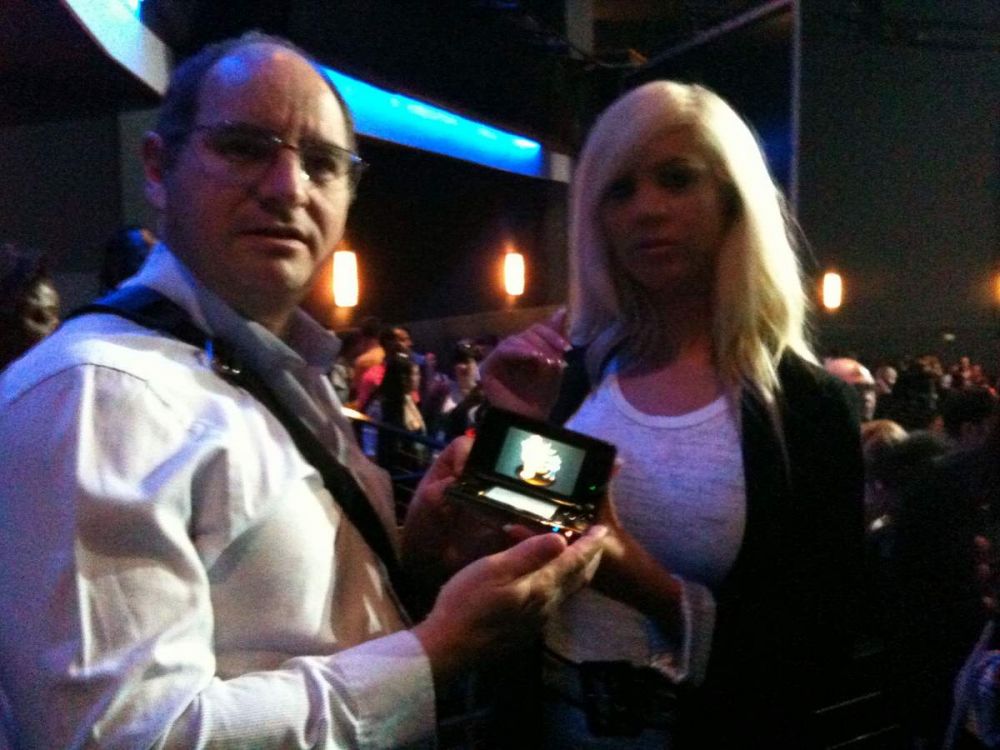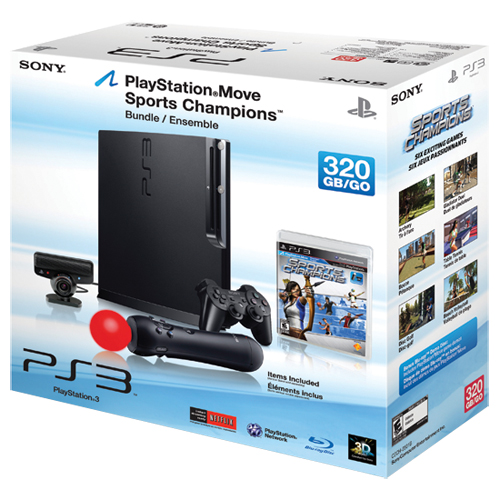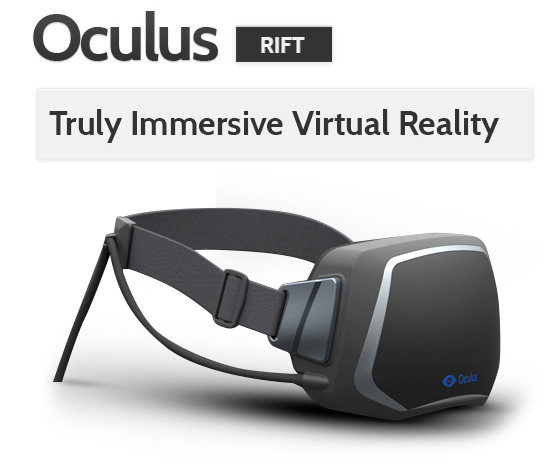
Featured Blog | This community-written post highlights the best of what the game industry has to offer. Read more like it on the Game Developer Blogs.
Call it a soft economic environment or media angst against the PC, there is a cause and effect for nearly everything in life. Neil Schneider theorizes about some key trends that have hurt PC gaming, and what needs to happen for PC to meet its potential.

Last July, AMD made an announcement that they saw a 40% drop in profits due to soft markets in China and Europe. While Nvidia’s stock has been doing better, the real credit goes to the increasing popularity of their mobile chipsets more than anything else. Intel could also be showing stronger performance. Setting economic weaknesses aside, why are people spending less on upgraded graphics cards and faster processors?
Let me share with you my story. I have always been and continue to be a PC gamer. Several years ago, I had gone through a bit of a rough patch with a failed business, and like any dejected entrepreneur, I was depressed. My wife asked me, “Neil! Why aren’t you playing your video games?” I explained that my computer equipment had grown so out of date, modern games were unplayable. Her grandmother and family sent me a fair sum for my birthday, and my enjoyment in video games was awakened once more.
First, I got an updated computer with an embedded AMD GPU on the motherboard. It was nice, I thought…but it could be better. So then I got a discrete Nvidia GPU. It was good, I thought, but it could be better. So I got a Creative Labs Soundblaster card with surround sound speakers. It was great, I thought, but it could be even better. Having run out of things to buy, I desperately bought a pair of 3D glasses off eBay (before 3D was really famous) with a used 19” CRT monitor (bigger than the 17” I had), and I was truly satisfied with my gaming experience. Sort of. Over the next two years, I continually upgraded my graphics card to get more performance and be able to maximize my games’ eye candy settings a little more each time.
This story marks the beauty of PC. It’s a constant opportunity to always have options to make your gaming experience a little bit better. The opportunities for advancement are nearly unlimited. Nearly.

Andrew Oliver, CTO of Blitz Games Studios
I have to admit that my console gaming experience is somewhat limited compared to that of PC. Separate from the Nintendo Wii, my main console is a Sony PS3 Slim that was sent to me as a gift from Blitz Games Studios. It’s a no muss or fuss block that sits near my TV, and just does what I tell it to do (except Windows!). I was honestly stunned by what it’s capable of graphically. While console games are definitely a bit rougher and tougher around the edges, they aren’t 180 degrees apart from what you get on PC.
The PS3 definitely has trade-offs with the ability to play multiplayer games (e.g. 32 player console versus 64 player PC maps in games), and there is no competition when it comes to available resolution options. Even though the spec calls for 60 FPS, the practice is really 720P or in some cases 1080P gaming at 30 frames per second max. In contrast, dedicated gaming PCs can easily do 1080P or higher and are often performing at 60FPS or more.
PlayStation Move Bundle
The Sony PS3’s GPU equivalent is a handicapped Nvidia 7800GT, and is probably more comparable to the Nvidia 7600GT that I used to upgrade my computer all those years ago. While Sony’s game development is based on OpenGL, it could be considered the same as DirectX 9 to PC gamers. From what I’ve read, the XBOX 360’s GPU is only a little faster than the ATI Radeon 1800XT. Similar to the PS3, XBOX is also based on a DX9 level architecture with a few graphics features borrowed from DirectX 10 as well.Reflecting on the sheer age of these console specifications, modern PC and console game releases shouldn’t be competitive at all, so something is very wrong with this picture!
While the weak economy is part of the problem, the PC’s biggest challenge is the content itself. Instead of creating unique gaming experiences for the much beefier desktop platform, it’s far too common for developers to just port their processor-light console games and fill in the market gaps by diversifying their platform support. Sure, as filler they up the resolution options and add some eye candy features to drive the GPU cycles, but it’s not the dramatic improvement over the console experience that the PC platform is really designed and intended to be. Where is the justification to buy a better graphics card or upgrade to the next round of CPUs beyond “max setting ego”?
Over the past few years, Intel and AMD have started to market motherboard solutions that feature the CPU and GPU on a single processor. This is a great way to inexpensively get their tech on a wide scale of machines through licensing deals and all-in-one computer purchases. The marketing promotes the technology as being able to support modern video games at low to mid level graphics settings without the need for a discrete graphics card. I’ve read that the first generation Sandy Bridge on-die GPU is nearly equivalent to an Nvidia 7600GT in terms of processing power – just like the Sony and XBOX 360. This clearly ties in well with the existing console to PC transition market, especially since a GPU on a CPU die reduces the QA diversification issues faced by game makers.
This seems like great news for the first round chip makers and PC manufacturers looking to put complete products in consumer hands, but where is the motivation for game developers to take things to the next level? By creating a common lowest denominator, there is limited motivation to do something unique on the PC platform. Where is the up-sell potential? How will programming for more powerful machines increase a game developer’s sales potential if the PC market’s standard is already in-line with a modern console?
While there is a belief that the Windows 8 OS will bring on a PC resurgence among enthusiasts, I think it will do little more than print money for Microsoft and fizzle out. Why? There is nothing happening to encourage uniquely featured and much improved video games compared to console, which is inching closer to PC competitiveness with their next generation release.
PC is still the financial winner, of course. According to the PC Gaming Alliance’s website, there are at least 250 million computers with discrete graphics cards (based on 2011 statistics). Most recently, the games taking the number one sales spot internationally were Guild Wars 2 and Diablo 3 (PC-only games!). The remaining titles are all on console or games available on PC and console. Why you ask? With its keyboard and mouse, the PC is uniquely qualified as a multiplayer and MMOG platform, something consoles can’t do as effectively. It also helps that some MMOG’s are extremely profitable with monthly fees, micro-transactions, and online communities. It could be argued that the PC’s sales benefits have had as much to do with the physical nature of PC, as they do with the graphics and processing power of PC.
For me, modern PC gaming with the right equipment has a great deal to offer. When faced with a choice to play the same title on console or PC, I always go with PC. I max out my AMD and Nvidia GPUs all the time, and I know I’m getting a visual experience I couldn’t dream of on my 3D HDTV backed console. However, for the PC platform to continue as a wide scale enthusiast’s dream machine with hopefully much bigger hardware and software profit margins, the experience gap between console and PC needs to grow wider and wider and wider.
It’s understandable that game makers have sided with console and the potential of cloud gaming because they are concerned about software piracy on PC. Things have changed for the better, however, and modern DRM systems have been very successful at helping quash the piracy problem. Valve’s Steam has been a shining light in this regard, and it’s no wonder that competitors like EA’s Origin and Microsoft’s upcoming DRM efforts are making themselves known.
While I’m admittedly biased, it makes sense why stereoscopic 3D and multi-monitor gaming is so attractive and important for the PC market. Thanks to stereoscopic 3D efforts by AMD (HD3D), Dynamic Digital Depth (TriDef) and Nvidia (3D Vision), combined with new and improved display hardware, it’s a real opportunity for the manufacturers to add a much improved visual experience with limited help from game developers, and it’s an honest to goodness justification for all those extra processing cycles.
It’s unfortunate that too many game developers have shot themselves in the foot by treating 3D as a publisher requested (and public relations motivated) check mark with few requirements, rather than a well conceived artistic add-on that is purposely designed to mix with the fabric of the game. It’s a sad truth, and represents a clear problem facing modern game developers, and their willingness to try new things seriously and responsibly.
Oculus Rift
On the plus side, Palmer Luckey and his new Oculus team have struck a chord amongst gamers for a John Carmack endorsed VR helmet complete with head tracking. Their Kickstarter campaign raised about $2.5 million, and game developers are grasping (grabbing?) the potential. If products like this require more processing power than the next generation of consoles can deliver, this is a good specialty market for PC games to build on. I’m hopeful that the nature of the technology will force game developers to take their product development responsibly, because you can’t actually support devices like these unless you know what you are doing…I hope.However, let’s step out of the clouds and forget about the potential of 3D and virtual reality for a moment. The desktop monitor, 3D or otherwise, will remain king for a very long time. What ultimately matters for the PC above all else is that it can deliver gaming experiences - not just visuals - beyond what can be done on console. The industry needs to stop limiting its imagination to screen pixel counts and fill rates; we need a new class of gaming that only PC can deliver. With modern consoles and even smartphones encroaching on what used to be a strictly PC domain, the desktop and its gamers have to move to higher ground and break out of the imaginative confines of the capped console market.
Gamers need a really good excuse to pay for endless supplies of processing power. With content makers just filling the platform spaces, that excuse has gone by the wayside in favor of filling some publisher’s checkmark form, and customers deserve better. Game developers deserve better. It’s as though the game makers have suddenly grown old and out of ideas beyond finding ways to creatively make $60 a pop.
When our industry figuratively wakes up one morning and asks “what can I do with my game now that I have NASA’s computing power at my fingertips”, the customers will again feel justified to buy that $3,000 PC with regular upgrades, the manufacturers will have every reason to push out more cycles in the consumer’s home, and the game developers will again make money off premiums and up-front game purchases as the norm, and not the exception. Yes, the PC industry can continue as it has for decades, but much like my regularly updated computer which reinvigorated my love of video games, we can do better.
Read more about:
Featured BlogsAbout the Author(s)
You May Also Like









